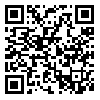BibTeX | RIS | EndNote | Medlars | ProCite | Reference Manager | RefWorks
Send citation to:
URL: http://hakim.tums.ac.ir/article-1-2293-en.html
2- PhD Health Economics, Associate Professor of Department of Health Management, Policy and Economics, School of pubblic Health, Tehran University of Medical Sciences, Tehran, Iran.
3- PhD Candidate in Health Economics, School of Public Health, Tehran University of Medical Sciences, Tehran, Iran ,
4- MSc in Financial Management, Kashan University of Medical Sciences, Kashan, Iran.
Introduction: In recent years, the trend of nurse migration from Iran has grown significantly. The increasing tendency and actualization of this phenomenon have led to considerable consequences for the country’s health system. This study aims to identify and analyze the harms associated with nurse migration by examining its various dimensions.
Methods: This qualitative study was conducted in 2024 using a content analysis approach and semi-structured interviews. The sample consisted of 57 participants, including migrant nurses, nurses planning to migrate, as well as nursing managers and faculty members. Data were analyzed using Braun and Clarke’s thematic analysis approach with the assistance of MaxQDA software (version 2020).
Findings: The harms of nurse migration were identified in four main themes: impact on the health system (reduced quality of nursing care, decreased motivation, professional commitment, and job satisfaction among remaining nurses, reduced quality of nursing education and experiential learning, occupational burnout, and nurse turnover); economic consequences (loss of national investment in nursing education and increased costs of workforce replacement); social consequences (public dissatisfaction with healthcare services and growing inequality in the distribution of healthcare services); and strategic consequences (heightened tendency among other healthcare groups to migrate, increased reliance on foreign workforce, and reduced resilience of the health system in crises).
Conclusion: Nurse migration undermines the stability and efficiency of the health system by negatively affecting care quality, exacerbating workforce burnout, weakening knowledge transfer, and increasing inequity in healthcare access. Curbing this trend requires coordinated policymaking to improve working conditions and strengthen human resources.
Received: 2025/03/11 | Accepted: 2023/12/21 | Published: 2023/12/21
| Rights and permissions | |
 |
This work is licensed under a Creative Commons Attribution-NonCommercial 4.0 International License. |






